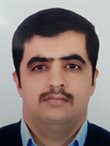 Dana Noory Ridha (PhD, 2015-2020)
Dana Noory Ridha (PhD, 2015-2020)
Dana’s research used benthic microfossil assemblages (foraminifera and ostracods) to trace deep-water circulation changes and ventilation history associated with long-term cooling in the Indian Ocean during the Neogene. Dana has returned to Autonomous region of Kurdistan, Iraq to take up a faculty position at the University of Salahaddin, Erbil.
 Zainab Al Rawahi (PhD, 2015-2020)
Zainab Al Rawahi (PhD, 2015-2020)
Zainab’s PhD research focused on the biostratigraphy and palaeoenvironments of the Late Cretaceous Natih Formation of Oman. Sponsored by PDO (Petroleum Development Oman), this research developed a revised bio-chronostratigraphic framework using new nannoplankton biostratigraphy and chemostratigraphy integrated with existing micropalaeontological biozones. Zainab has returned to her position as a Stratigrapher at PDO.
 Marcelo de Lira Mota (PhD, 2015-2020)
Marcelo de Lira Mota (PhD, 2015-2020)
Marcelo’s research documented sea level and ecological perturbations associated with global cooling at the Eocene-Oligocene transition. This research used exceptionally preserved palynomorphs preserved in the late Eocene Yazoo Clay succession of Jackson Mississippi, and bulk sediment geochemistry. Marcelo went on to take up as a role as an Assistant Researcher at the Technological Institute of Micropalaeontology, University of Vale do Rio dos Sinos (UNISINOS), Brazil.
 Kate Ashley (née Newton) (PhD, 2014-2020)
Kate Ashley (née Newton) (PhD, 2014-2020)
Kate's doctoral research involved working with organic geochemistry, and sedimentological and physical property datasets to reconstruct the Holocene record of East Antarctic Ice Sheet dynamics.
 Azrin Azmi (PhD 2014-2018)
Azrin Azmi (PhD 2014-2018)
Azrin’s research focused on the benthic faunas of Early Jurassic successions from Northern Ireland, with the aim of providing new biostratigraphies as well as palaeoenvironmental, palaeogeographic and palaeoclimate information. Azrin now holds an academic position at the National University of Malaysia.
Carlos D’Apolito (PhD 2012-16)
Carlos’ research is focused on the Neogene environmental history of the Amazon, using palynology to provide long-term estimates of tropical plant diversity. Carlos is currently studying the Neogene and Quaternary formations of western Amazonia.
Nursufiah Sulaiman (PhD 2012-16)
Sufiah’s research focused on coccolithophore assemblage changes through the late Eocene-early Oligocene of the Mossy Grove core, Mississippi, and the development of palaeoenvironmental reconstructions of the late Eocene Gulf Coast.